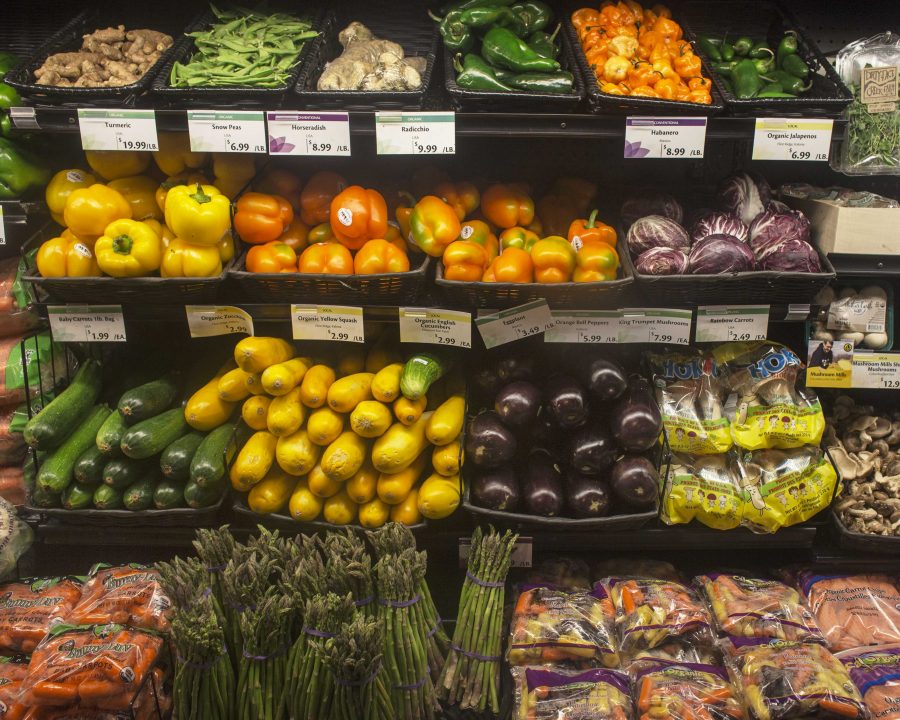Kumar: Fresh produce and food insecurity
Healthy eating is a privilege, because fresh produce is far more expensive than unhealthy alternatives that have a longer shelf life.
Organic vegetables are displayed in New Pioneer Co-op on July 26, 2016.
September 25, 2018
As the movements for clean eating, veganism, and sustainable farming grow across the nation, the demand for organic foods and fresh produce in general grows as well. Growing up, it was reinforced to us that eating our fruits and vegetables were important to our health and wellbeing. Unfortunately, that’s not an option for everyone. Eating healthily is a privilege that we don’t often think about.
In 2017, the U.S. Census Bureau reported that 39.7 million people lived in poverty, and 41.3 million people were on food stamps at the end of the year. All of those people have an access problem when it comes to food.
The National Center for Biotechnology Information states, “When incomes drop and family budgets shrink, food choices shift toward cheaper but more energy-dense foods. The first items dropped are usually healthier foods — high-quality proteins, whole grains, vegetables, and fruit.”
RELATED: Nadler: Plot twist: Organic food is cheap
The quality of a person’s or family’s diet is severely affected by their income level. Often, their only option for a full belly is an unhealthy one. While many may argue that equal access to healthy foods exists, they forget that unhealthy alternatives are more readily available, far cheaper, have a longer shelf life, and are more convenient when your budget and time are constrained.
According to the Food Resource Action Center, low-income neighborhoods more frequently than not don’t have full-service grocery stores, which makes it harder for those without transportation to be able to purchase fruits, vegetables, and quality proteins. When they are available, they are of lower quality. Food inequality doesn’t just stop at low-income neighborhoods but extends onto college campuses as well.
The Center for Law and Social Policy estimates that 22 to 33 percent of college students are food-insecure. The number is higher among first-generation college students. Many students drop out because of the financial burden and their inability to acquire basic needs such as food. A hungry student is not one who can succeed.
RELATED: ‘New Age’ farmers grow local produce year-round
Iowa City has a unique problem with food insecurity because it has such a high cost of living, and most residents, families and students alike, rent housing. Between rising tuition and lack of jobs on campus, the need for a place that has food available at no cost is necessary. The university Food Pantry fulfills that need. As of 2017, the Food Pantry has had more than 700 visits.
Grow Johnson County is another local organization that exists to help with hunger relief in the area. It operates on the belief that good food is a human right, particularly fruits and vegetables. Not every community and college campus is fortunate enough to have organizations such as the Food Pantry and Grow.
For students and our fellow community members, access to good healthy food should not be a worry. A world in which you have to choose between unhealthy food or no food at all is not a foundation for a sustainable future. People not only need to eat, they need to eat healthy food in order to survive.
We need to continue to support community efforts such as Grow and our local food pantries, but the problem of food insecurity can’t be solved until we recognize how much of a privilege it is to eat nutritious food or to eat at all.






